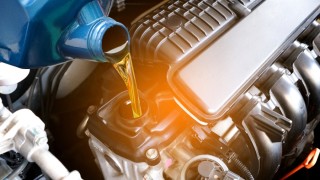People often think that keeping their car well-maintained can be expensive and complicated. Even though you might not be well-informed on all the technical aspects of a vehicle, there’s plenty you can do yourself to prevent unexpected repairs.
Figure out precisely what kind of service you require & when. Learning about proactive maintenance tasks will keep all owners aware of what they need. So exactly how often do you need to service your car from a professional mechanic garage?
Consult Your Owner’s Manual
Every vehicle requires proper upkeep to ensure it works perfectly on the road; this is why each car comes with a schedule for maintenance in the owner’s manual. Having a maintenance chart in your owner’s manual is extremely useful as it helps you figure out which services you should carry out & when. All you have to do is check the mileage on your car, the chart will inform you about the rest.
Owner manuals typically come with two different schedules: regular and severe. Cars used in demanding & harsh driving conditions, often require frequent visits to the mechanic garage for maintenance. The “severe” schedule serves best for such vehicles. Many people think that their vehicles don’t belong in the “severe” category, however even if you drive in stop-and-go traffic regularly, you most likely do.
Computers In The Vehicles May Help
Several newer cars come with in-built computers that keep a proper track of the maintenance schedule. Many systems display the “oil life remaining” indicator and read out the code that is displayed when the light comes on. Visit your mechanic garage or follow the instructions in your owner’s manual, and then get it serviced on schedule.
Important Car Maintenance Tasks
- Check Your Oil
To ensure that your car doesn’t turn into a pile of metal junk, it is essential that you always maintain a perfect level of oil each time you stop for gas. In case your oil is critically low, buy the appropriate oil for your vehicle at the gas station. Keep doing this until the reading is back to its proper range.
- Oil Change
The days of a 3,000-mile oil change are long gone. The time gap between has changed significantly as a result of advances in both oil and engines. This is great for both your pocketbook as well as the environment. The skilled mechanic garage will run several tests on the oil, which then alerts them about any potential engine problems. Oil change intervals today reach anywhere between 7,500 – 10,000 miles.
- Examine Your Tires
Your ability to stop the car in emergency situations or snowy winters will decrease if you have worn, underinflated, or severely damaged tires. Luckily for you, inspecting tires is extremely easy. Step one is to check the tire pressure. Tires that are underinflated have a poor grip & can overheat at high speeds as well.
Step two is to examine the sides of your tire for tears, gouges, or rips. Unexpected blowouts can occur if there is any sidewall damage. The last step is to inspect the depth of the tread. You require new tires ASAP if you have less than 2/32’” of tread remaining.
It is also essential to inspect your air filters, and always replace them on schedule which is generally every 30,000 miles. It is also vital to replace the cabin filters once a year as they clean the air you breathe in the car. Keep frequent tabs on the condition of your brakes as well. The life-span of your brakes is wholly related to your driving habits.
Your batteries should easily last you about 5 years, and less if you live in subfreezing temperatures. An experienced and skilled mechanic garage can easily take care of these tasks.



